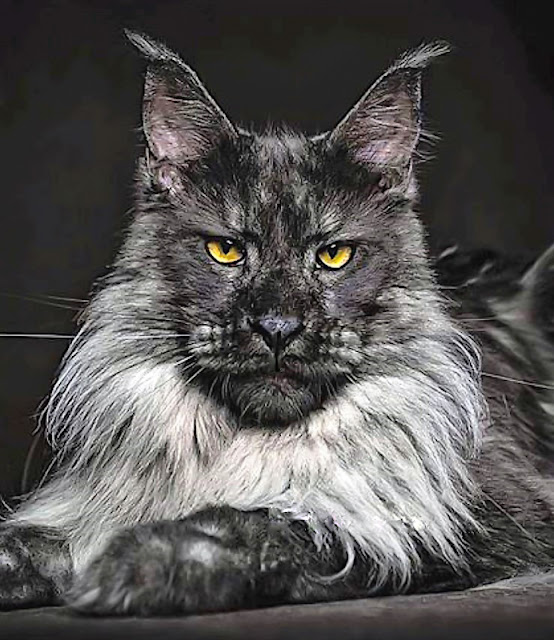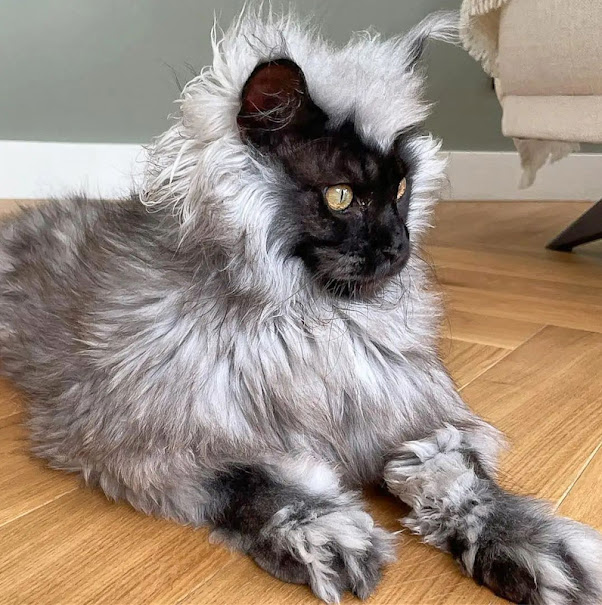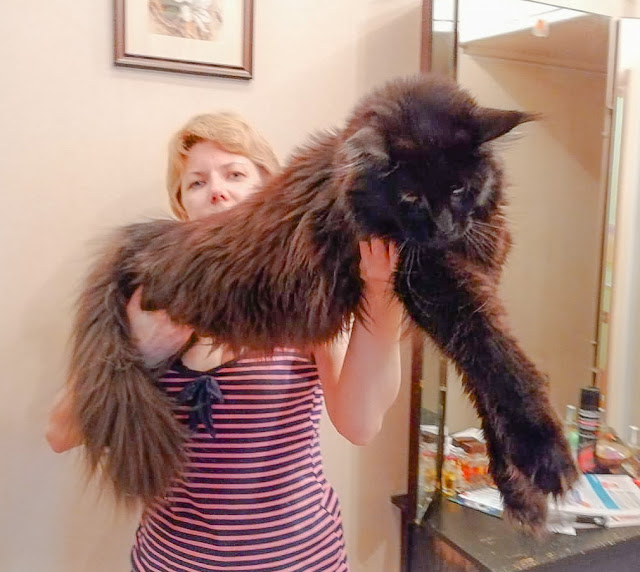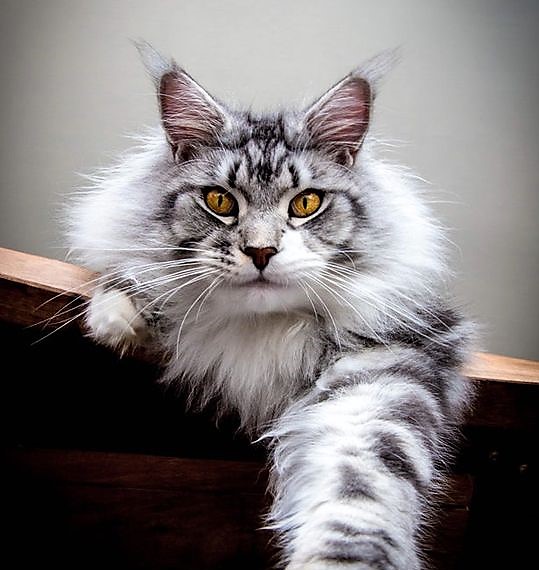Some behavioural traits of the Maine Coon according to a large-scale Finnish study
I think that it is always useful to go to science to examine the behavioural traits of any single cat breed. In this instance, a Finnish study titled: 'Breed differences of heritable behavioural traits in cats', looked at 5,726 individual cats through a questionnaire given to their owners.
 |
| Ginger tabby and white Maine Coon chilling. Image in public domain. |
Maine Coons participated in study as did other breeds and non-purebred cats. They were looking at whether selective breeding of Maine Coon cats and other breeds controlled to a certain extent the cat's character. And they found some correlations between genetic inheritance and behaviour.
I have always said that in any chosen breed you can't say that all the individual cats are going to have the same character. That is impossible and it doesn't make sense. That's because there are two influencing factors: inherited character and environmentally altered character through experiences.
Also, there are many breeders of Maine Coon cats using different foundation cats and therefore the individual cats that they create are going to have different characters to the creations of other breeders.
Nonetheless, there are some patterns and the study found those patterns. There should be a caveat to this because the results are based upon a questionnaire as mentioned. That is not entirely reliable although this was a large number of cats which would help to iron out any wrinkles.
That is my observation and it is the observation of a layperson i.e. non-scientist but with some scientific background knowledge.
Results - summary for the Maine Coon
- The study found that amongst the almost 6,000 cats studied, Maine Coons were the most likely to perform wool sucking together: non-purebred cats, Norwegian Forest cats and Turkish Van cats. Incidentally, Russian blue cats were the least likely. Wool sucking is a behavioural deficiency due sometimes to early weaning (see below).
- Maine Coon cats were found to be slightly above average in their probability of being aggressive towards family members. Maine Coon cats were about average or just below average in respect of probability of aggression towards strangers.
- The Maine Coon was below average on probability of aggression towards other cats and about average in terms of shyness towards strangers.
- And they were little below average in terms of less contact with people. This is a double negative which must mean that they are slightly above average in their desire to have contact with people.
- In terms of probability of a high activity level, the Maine Coons is around average or a bit less than average.
- In terms of probability of shyness towards novel objects (object that they had not encountered before) the Maine Coons was just bit above average. In other words, they tended to be a little bit shy towards novel objects compared to the average.
- In terms of wool sucking, they were notably worse than the average as mentioned below.
- In terms of the probability of engaging in excessive grooming, Maine Coon cats are below average.
- And in terms of the probability of a Maine Coon cat being considered to have behavioural problems by their owner, the Maine Coons is around average.
- The study found that both Maine Coons and Ragdolls showed a positive genetic correlation between contact with people and activity levels. I interpret this to mean that through selective breeding which controls the genes that are inherited by offspring, the activity level of Maine Coons and their desire to have contact with people is inherited.
- They also found a "positive genetic correlation between aggression towards family members and aggression to other cats". I take this to mean that if a Maine Coon cat is aggressive to other cats, they will also be aggressive to family members due to their genetic inheritance. This is not saying that they are aggressive.










Comments
Post a Comment
Please share your Maine Coon experiences.